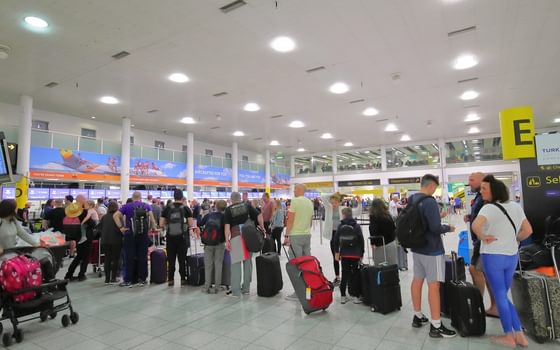Turbulence expected
The climate cost of airport expansion
21 May 2021
Despite the challenging period that the UK aviation sector has experienced since the start of the pandemic, a host of airports are moving to expand their capacity. These airports can be divided into two groups. Gatwick, Heathrow and Luton have officially notified government of their intent to apply for expansion as part of the ‘nationally significant infrastructure’ (NSI) process, but have yet to submit their full applications and appraisal documentation. Four smaller, non-NSI expansions at Bristol, Leeds Bradford, Southampton and Stansted airports are going through the local planning process. These latter applications are more advanced and all four have received an initial planning decision – two approved and two refused.
In the context of rapidly evolving scientific understanding of aviation’s climate impact, and significant policy and forecast uncertainty as a result, in this report we look at the credibility of estimates of climate impact put forward by the four non-NSI airports as part of their planning applications. In this report, we conduct comparative analysis and ‘re-modelling’ of carbon costs in order to present a credible range of estimates of the potential climate impact of each scheme at the airport level and put a monetary value on this impact. We identify a number of important failures of the non-NSI airport appraisals to follow best practice, often leading to significant understatement of the climate impact of the proposed schemes:
- All four schemes rely on optimistic estimates of long-term fuel-efficiency gains, and two do not test lower rates of technological development and roll-out, despite this assumption impacting significantly on the final climate impact estimate.
- Research shows that emissions such as aerosols, water vapour and nitrogen oxides have the potential to double or even triple the climate impact of airport expansion, yet only one of the four applicant airports quantifies this impact.
- Three out of the four airports do not present the climate impact of inbound flights. While not part of national emissions accounting protocol, emissions from new inbound flights may still represent a material impact of airport expansion and are therefore appropriate to include in an appraisal.
- Only one out of the four airports has submitted any monetised climate impacts. As a result, applicant airports have also failed to test the impact of higher future carbon prices and lower discount rates, despite the government warning that both may be on the horizon.
Taking these omissions in aggregate, applicant airports have ignored their exposure to uncertainty and risk and obscured potential airport-level climate impacts between two and eight times greater than indicated in their appraisal documentation. Expansion scheme promoters have also failed to account for the monetised cost of emissions caused by expansion, collectively worth £2.4 billion to 13.4 billion, and have overstated the economic case for expansion. Around 65% of this emissions cost will not be captured by current regulations on the aviation sector and will therefore be borne by society, either in the costs of capturing emissions elsewhere in the economy or in the social damage resulting from climate change.
This report questions whether decision makers had access to a complete and robust set of evidence upon which to base their determination; and further, whether local authorities are even the appropriate stakeholder to appraise the climate cost of expansion. In the case of the three large expansions at Luton, Gatwick and Heathrow which will be considered by central government, this report highlights the importance of ensuring applicants adhere to best practice in the appraisal process.
Recommendations
- The Secretary of State should call in all of the currently active airport planning applications and assemble a more robust and precautionary evidence base on climate change issues. This evidence can be measured against the forthcoming aviation decarbonisation strategy and the government’s new 2035 emissions target, which is expected to include international aviation emissions. In addition, the government will need to demonstrate how the proposed expansions can be reconciled with the Climate Change Committee’s recommendation of a no net-expansion policy on airports.
- The Department for Transport (DfT) should ensure a more robust evidence base is assembled for the appraisal of future airport expansions, including in the case of future NSI proposals, all of which are expected to involve significant climate impacts. This should include tighter guidelines and expectations on the integration of non-CO2 climate impacts, and the monetisation of said impacts.
Image: iStock
Campaigns Stop airport expansions
Topics Transport Climate change Environment







